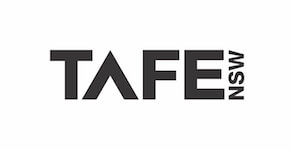Reward and recognition are concepts often used interchangeably in the workplace, and although they are both useful tools in engaging and motivating employees, the psychological systems that they target yield completely different results. Understanding the difference between reward and recognition is vitally important in the development of team morale, employee retention and creating programs to increase the productivity and most importantly, happiness, of your staff.
Whilst reward and recognition can’t function without the other and mutually benefit many aspects of workplace culture, it’s important to discern the differences between them.
REWARD
Rewards are usually tangible incentives provided to employees for reaching a specific goal or achieving their job well. These are often provided through bonuses, promotions, other financial incentives, or even additional vacation days. The motivational role of these rewards is undeniably evident, and will absolutely encourage short-term goals to be achieved, deadlines to be met, and overall productivity to be at a good base rate. In essence, however, these are targeted as a compensation for a service, and whilst nearly every business has a plentiful array of rewards, these still fall into the category of being a means to an end. For example, giving a child pocket money for doing chores around the house clearly fits into the category of ‘reward’- we are giving them compensation for doing the job, but it is conditional on them hitting the target of what we want them to do. We shouldn’t, however, expect them to thank us for it, enjoy doing it or want to do it better next time, nor should we expect to develop a better bond with them during it. The most we can hope for in this scenario is that they do the minimum steps to reap the reward.
RECOGNITION
Recognition, on the other hand, is about noticing and honouring a person’s contribution to the whole and is more commonly offered with non-tangible forms, such as verbal praise, thank you notes, or public acknowledgement. Recognition is offered to make employees feel valued and appreciated for their time and effort, regardless of whether they have achieved a target or hit a specific goal. Authentically honouring and recognising a child for their contribution disregards the ’minimum’ requirement of the job, and inadvertently inspires them to excel past the base rate of expectation, whilst also nurturing a bond with them.
Whilst both reward and recognition set out to motivate employees, psychologists split motivation into two main branches: intrinsic and extrinsic motivation. Intrinsic motivation refers to the drive that comes from within – the desire to do something because it is personally enjoyable and fulfilling. Extrinsic motivation is motivation that comes from external influences- whether that be a reward or a punishment. With this in mind, it’s easy to link rewards with extrinsic motivation, and recognition with intrinsic motivation. In a corporate setting, it’s important to note that extrinsic motivation is activated by a sense of control and expectation, whereas intrinsic motivation is activated by a sense of self-fulfilment and competence. In this way, it is very easy for ‘recognition’ to be transformed into extrinsic motivation, if the praise appears to be motivated by strict goal setting or monetary compensation.
Many studies have focused on intrinsically motivating employees, and a huge body of evidence indicates an array of benefits on both personal and organisational levels. Some include:
- Higher employee retention
- Studies have shown that the #1 reason employees leave their jobs is a lack of recognition, and that companies with recognition programs had around 31% less voluntary staff turnover
- Boosting morale, motivation and productivity
- The SRHM Globoforce Employee Recognition Survey showed that organisations with recognition programs in place experience nearly 29% lower frustration levels in employees
- Interestingly, a scientific studyshowed that productivity was heightened when employees were recognised, but that a huge increase in productivity actually came from employees that weren’t chosen to be recognised in the study. This shows that even having recognition of a few employees vastly increases the overall productivity of employees.
- Fosters creativity and teamwork
- Intrinsically motivated behaviours include initiative, commitment and inventiveness, along with encouraging people to go above and beyond the ‘minimum’ and seek personal improvement. Intrinsically motivated people understand their personal and unique strengths, and strive to use them for the best.
There are many ways to increase recognition of co-workers or employees, starting from a simple ‘thank-you’. The best part is that they are mostly cheap (or even free) and very easy to do. Here are some suggestions:
- Providing shout-outs
- This helps when it comes from amanager or higher up- in fact, a study by Quantum Workplace showed that 52% of employees want more direct recognition from their immediate manager
- Set up a fun day where they can let some steam off and do an activity together (who knows, maybe an Amazing Race!). It’s far better when the activities aren’t directly related to theirwork tasks.
- Write a thank you card or put flowers on their desk
- Offer personal development days where they can choose what they want to focus on
- Host a themed costume day or a bring-your-pet-to-work day!
- Just say thank you



























































































